With the end of 1976 in view, William Safire flipped back to the Era of Good Feelings. In a New York Times op-ed charting how a president-elect might make foreign policy—with or without the Secretary of State’s input, and with or without the Soviet powers—Safire dredged up The Columbian Centinel’s best buzzwords of 1817 for foreign policy.
Meant “to describe the one-party euphoria of the James Monroe Administration,” Safire wrote, the era “turned out to be a time marked by petty factionalism and stagnation. Not until party partisanship reared its divisive head, under the banner of Andrew Jackson, did a vigorous two-party system get the nation moving again.” Safire’s read was a bit bent. Monroe, a popular president, had crossed party lines to secure his Secretary of State, John Quincy Adams, and seal other appointments. With Latin American revolutions alive, and American boundaries up for grabs, how “still” did things really feel from 1817 to 1825?
Today, we wrap up our roundtable on the Era of Good Feelings’ bicentennial legacy. Big thanks to all of our roundtable participants and commenters for weighing in this week! Let’s end by putting primary sources in the USIH spotlight, and open up conversation in the comments. Here are a few resources to survey as we reconsider the era’s history, and how/why to teach its legacy in university classes, and beyond. Suggestions are welcome!
See the heart and soul of American union: John Quincy Adams, An address delivered at the request of a committee of the citizens of Washington: on the occasion of reading the Declaration of Independence, on the fourth of July, 1821. Since he turned 250 this week, reread Adams’ 4 July 1821 speech, which outlined the more recognizable contours of what became known as the Monroe Doctrine. Accented with Christian hopes for antebellum progress, the statesman’s Washington, D.C., oration was lit with the kind of rhetoric that Victorian Americans liked: proud, Protestant, and progressive. Here is Adams’ landmark speech as it appeared in the press. Within the Adams Papers at Massachusetts Historical Society, we also hold a draft of the oration in JQA’s hand, laden with multiple edits and definitely worth another look (go directly to microfilm reel 452).
Visit with James Monroe, at home and on the road:
A soldier, lawyer, and slave-owner, the fifth president leveraged key appointments to offset the seeping sectionalism that afflicted the young government. His eponymous policy doctrine shifted the course of U.S. foreign relations and engraved new national boundaries. To understand his episodes of personal and professional change, see The Papers of James Monroe; trace his national tours on the James Monroe Museum’s incredible interactive story map
; and explore this detailed timeline about slavery at his Virginia estate of Highland. Plus, free lesson plans!
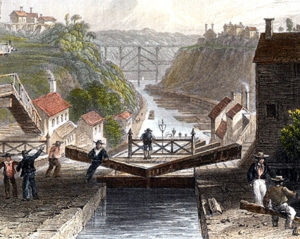 Take a (virtual) trip down the Erie Canal: Early America’s transformative, high-profile construction project sped up the era’s traffic of people, ideas, and goods. Learn more about its history here and here. Then, catch up on this excellent post showing how America’s “first great social space” also carried different currents of religious thought. “The Erie Canal is the place where the young United States, and its religiosity, ceased looking to the East and the past — Europe and New England — and began looking West and to the future — to a grand unfolding continent,” writes S. Brent Rodriguez Plate.
Take a (virtual) trip down the Erie Canal: Early America’s transformative, high-profile construction project sped up the era’s traffic of people, ideas, and goods. Learn more about its history here and here. Then, catch up on this excellent post showing how America’s “first great social space” also carried different currents of religious thought. “The Erie Canal is the place where the young United States, and its religiosity, ceased looking to the East and the past — Europe and New England — and began looking West and to the future — to a grand unfolding continent,” writes S. Brent Rodriguez Plate.
Meet the press, and go behind the headlines: The production of daily and weekly newspapers boomed in the antebellum period, as trains ferried broadsheets to a rapidly growing readership. Check out the Readex list for the era by region, and learn how texts “went viral” in the early 19th century thanks to the digital historians at Northeastern University. Check out the people who topped the headlines, to get a sense for how early American forged an independent culture. Soprano Jenny Lind enthralled audiences. Artists George Caleb Bingham, Thomas Cole, John James Audubon, and Thomas Doughty captured the country’s reveries in nature and riots in politics. Remember the ladies who grew up in the Era of Good Feelings, and how America’s worldview was reflected in their latter work: preacher Jarena Lee, writer and historian of slavery Lydia Maria Child, inventors Mary Brush and Mary Dixon Kies, and Dr. Elizabeth Blackwell.
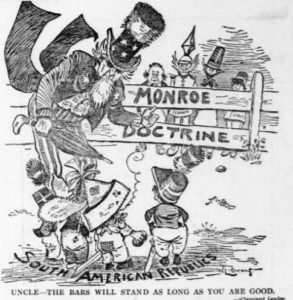 Say it with satire: Political cartoons and caricatures chronicling the era abound. While the likes of an American Punch and the Harvard Lampoon did not take cultural root until later in the 19th century, the national sense of humor and criticism noticeably sharpened. The Swann Collection at the Library of Congress is a good place to look for evidence. Also, check out this excellent Gilder Lehrman article contextualizing the power of political cartoons in antebellum life.
Say it with satire: Political cartoons and caricatures chronicling the era abound. While the likes of an American Punch and the Harvard Lampoon did not take cultural root until later in the 19th century, the national sense of humor and criticism noticeably sharpened. The Swann Collection at the Library of Congress is a good place to look for evidence. Also, check out this excellent Gilder Lehrman article contextualizing the power of political cartoons in antebellum life.

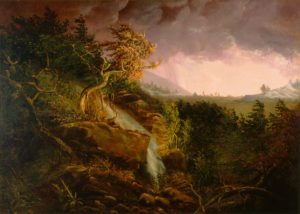
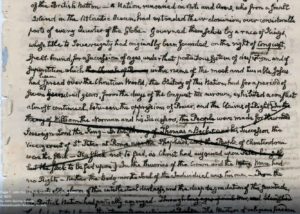
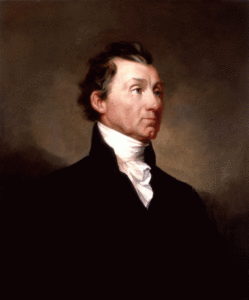
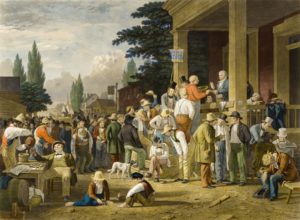
3 Thoughts on this Post
S-USIH Comment Policy
We ask that those who participate in the discussions generated in the Comments section do so with the same decorum as they would in any other academic setting or context. Since the USIH bloggers write under our real names, we would prefer that our commenters also identify themselves by their real name. As our primary goal is to stimulate and engage in fruitful and productive discussion, ad hominem attacks (personal or professional), unnecessary insults, and/or mean-spiritedness have no place in the USIH Blog’s Comments section. Therefore, we reserve the right to remove any comments that contain any of the above and/or are not intended to further the discussion of the topic of the post. We welcome suggestions for corrections to any of our posts. As the official blog of the Society of US Intellectual History, we hope to foster a diverse community of scholars and readers who engage with one another in discussions of US intellectual history, broadly understood.
Quincy Adams was no Federalist long before Monroe crossed party lines, allegedly, to name him SoS.
The Massachusetts General Court elected an official replacement for him in the Senate well before his term expired, precisely because he had broken with the party enough. Indeed, Adams resigned his seat and changed his party affiliation over this.
Plus, Madison appointed him as minister to Russia, then Britain. AND he was offered a spot as an Associate Justice while he was in Russia. (That would have been interesting, had he accepted.)
These are elemental facts.
For an excruciating and interminable exchange of public letters from 1825 to 1828 on whether J.Q. Adams advised President Jefferson in 1808 that New England Federalists seeking to repeal the trade embargo were colluding with the British government (“Yes, I’m afraid you did”, “No, you’re mistaken, I didn’t”), see the collection of documents compiled by Hernry Adams in “New England Federalism 1800-1815,” (1877). A display of deference if not good feelings.
Thank you for reading, and for contributing to the ongoing conversation on the Era of Good Feelings’ bicentennial legacy.
JQA’s trajectory is complex to trace, especially given the familial distaste for party politics. Citing his many milestone appointments is a helpful chronological base, but applying scholarly context is key. With that in mind, readers here may be interested in the recent wave of books about JQA and his wife Louisa Catherine that we’ve seen in the past few years (i.e. by Phyllis Lee Levin, Jim Traub, Louisa Thomas, Margery M. Heffron, David Waldstreicher and Matthew Mason, Michael O’Brien, Charles Edel, and more). I’d encourage anyone curious about JQA’s intellectual trajectory (re: politics, religion, slavery, antebellum culture, &c. ) to explore the 51 volumes of diaries that we have worked hard to make available as a free, digital primary source for all: http://www.masshist.org/jqadiaries/php/
Henry Adams’ work is also a good read, though it is weighted with the author’s editorial interventions and methodological experimentation. As a historical editor, I see it as a fascinating example of selection, annotation, and indexing at play. Knowing how Henry approached his family archive, and after nearly a decade of reading the Adamses, I’d recommend supplementing Henry’s book with a closer read of JQA’s attendant correspondence, which is widely available on microfilm and open for research: https://www.masshist.org/adams/locate-manuscripts
Lots to think about here re: primary sources, and in looking back on the last week of excellent posts. Thanks to all participants!